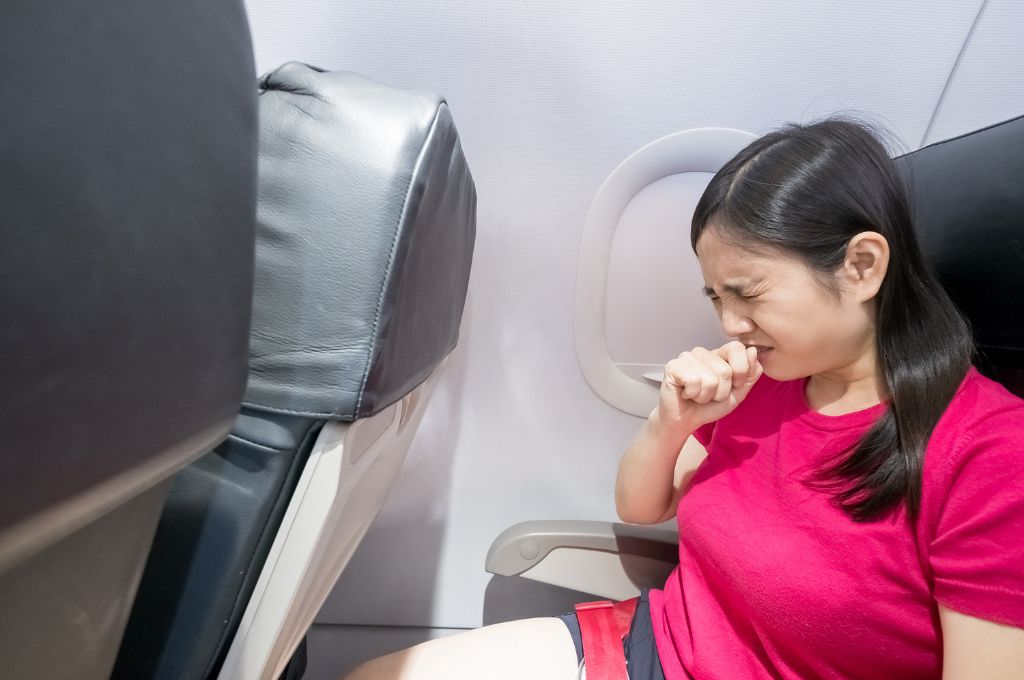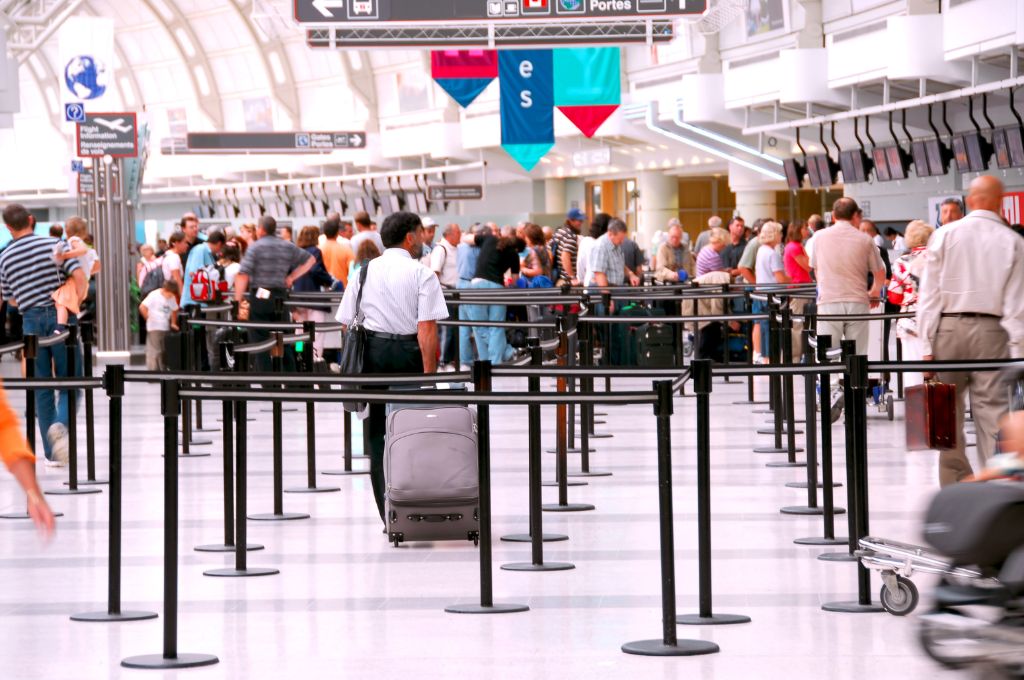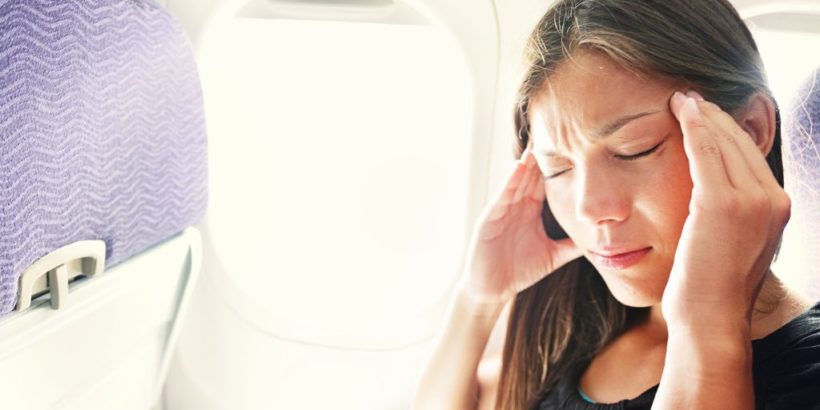Have you ever wondered whether or not sick passengers are allowed to fly?
Can airlines actually refuse to provide service to a sick passenger — even if it is something basic like the common cold? And if so, how would this process actually work in a real world setting?
In this article, I will talk about some of the policies that major airlines have along with what the law says and how these could be enforced on passengers trying to fly with certain illnesses.
Table of Contents
Can airlines refuse sick passengers?
Yes, airlines can deny boarding to some sick passengers based on the terms found in their contract of carriage and based on federal law.
Typically, airlines will only deny boarding if they believe the passenger has a contagious disease or other condition that could create a health or safety threat while on the flight.
In those situations, airlines will have to abide by specific rules and we will dive into those details below!

Policies on denying boarding to sick passengers
Let’s start with the World Health Organization which has a clear stance on this and states:
“Airlines have the right to refuse to carry passengers with conditions that may worsen, or have serious consequences, during the flight…
As for individual airlines, it’s pretty easy to find the airline’s policy for dealing with sick passengers by taking a quick look at the contract of carriage.
There’s usually a section on “refusal to transport” and that is where you will find the relevant language.
For example, here is what Delta states on who they refuse to transport:
“When the passenger has a contagious disease that may be transmissible to other passengers during the normal course of the flight”
Here is what United states:
Passengers who appear to have symptoms of or have a communicable disease (or there is reason to believe there was exposure to a communicable disease) or other condition that could pose a direct threat to the health or safety of themselves or others on the flight….
And here is the language from Southwest:
Boarding or attempting to board an aircraft when the Passenger has an infectious disease or infection that poses a direct threat (as defined in 14 CFR § 382.3) to the health or safety of Passengers and/or Crew that cannot be eliminated by a modification of policies, practices, or procedures, or by the provision of auxiliary aids or services
The policy by United and Southwest refers to a “direct threat” which is a clear reference to the federal statute that gives airlines permission to deny sick passengers boarding when they present a direct threat.
When making this “direct threat” determination the airline considers two things.
First, they consider the “significance of the consequences of a communicable disease.” In other words, how deadly or severe is this disease?
Second, they consider how transmissible the disease would be via “casual contact in an aircraft cabin environment.” Is it spread by coughing? Bodily fluids? Etc.
The statute clarifies that certain types of illnesses like the common cold would not be a direct threat because of the lack of severe health consequences but other conditions like SARS could be.
Often airlines will refer to the CDC and other health organizations when making this determination.
You’ll notice that the provisions tend to focus on whether or not the passenger is contagious or “communicable.”
There’s a long list of communicable diseases but some of the most popular that we know of now include coronavirus, the flu, Ebola, Zika, and West Nile. These often fall into that direct threat category even though the severity of them can vary widely.
Sometimes a passenger can get around these health-related travel restrictions by having a medical certificate from a doctor.
Basically, they get a letter explaining measures for preventing transmission of the disease and as long as the airline can comply with these, the passenger should be able to fly.
Flight attendants generally have a background in CPR and first aid but unless a doctor is on board, there will always be limitations to the treatment available to the sick individual on the plane.
So if you plan on traveling when sick make sure you always keep that in the back of your mind.

How sick passengers are denied boarding
So how would getting denied boarding for a sickness actually work in practice?
Basically, the flight attendants and crew will be looking for signs of illness during the check-in and boarding process (they also look for other things like signs of intoxication, nervousness, etc.).
As for sickness, they are looking for people who look very ill/pale in the face or have signs of illness like bad coughing, sneezing, sweating, etc. At some airports, there may even be infrared temperature readers that will detect if someone has a fever.
Flight attendants continue to observe through the boarding process. So you could still be flagged as a sick passenger even after you make your way to your seat.
The flight attendants can then report their findings to the captain who can make the ultimate call on whether or not the passenger can fly.
As the WHO states, “If cabin crew suspect before departure that a passenger may be ill, the aircraft’s captain will be informed and a decision taken as to whether the passenger is fit to travel, needs medical attention or presents a danger to other passengers and crew or to the safety of the aircraft.”
This screening is often a tricky and very imperfect process, though.
Some people may just have bad allergies or some other type of non-contagious condition such as a lasting cough from a previous illness. Planes are also very dry and present an instant environment change which can cause people to cough and sneeze more often.
Other times, it’s simply too difficult to screen every passenger so sick passengers still get through (and sometimes tragically die).
To help with the screening, airlines utilize a special medical service like Stat-Md or MedAire so that the flight attendants can evaluate whether or not somebody is fit to fly.
For example, they can access a 24/7 hotline and talk to doctors or nurses about the symptoms that somebody is displaying. (These services can also be used while in the air in case medical attention needs to be provided.)
Airlines really want to avoid a potential reroute or flight diversion because those can be very dangerous and costly events.
If the captain determines that the passenger is not fit to fly (which they may decide based on advice from a professional) then the sick passenger will be asked to exit the plane or not to board.
At that point, they will probably be met by a security agent or agent of the airline to figure out the next step.
Depending on the illness and symptoms, they could try to fly a few hours later if they end up feeling better or they could be referred for medical treatment.
Related: Can You Still Fly if You Have a Cough? (Or Should You?)
Can you get refunded if denied boarding for a sickness?
If an airline denies a passenger boarding because that passenger has some type of communicable disease and presents a direct threat then federal law requires them to allow the passenger to travel at a later time, which could be up to 90 days from the date of postponed travel.
What’s more, the passenger should be allowed to travel at the fare that applied to their originally scheduled trip. However, the passenger can also request a refund for any unused flights.
If you can contact an airline ahead of time, sometimes you can get these things figured out well ahead of your trip and still get your money back. For example, I once was unable to fly with United and after sending in a signed doctor’s letter, I got a full refund on my nonrefundable ticket.
This is why travel insurance through a travel insurance provider or via a credit card is so helpful. You always have to check the terms but usually you will have coverage for any type of illness as long as it is not stemming from a pre-existing condition.
Outbreaks
Sometimes an airline may be worried about an outbreak of a certain disease and dozens of passengers believed to have been exposed to the outbreak could be asked to not fly.
This could even mean them getting escorted off the plane!
They would then have to go through some type of medical screening and after perhaps spending a day or two getting monitored or screened, they might be able to fly again.
Other times, there could be an outbreak where passengers to start to develop flu like symptoms mid-flight.
When this happens, preparations could be made on the ground to screen the passengers whenever they arrive at the destination.
If it’s a major disease, there could be mandatory screenings and quarantines but for most less severe outbreaks, there is not enough authority to enforce major restrictions and people are sent on their way.
Both of these situations can be stressful but unfortunately there’s not too much you can do about them if you get caught in a situation like this.
(I do carry N95 masks with me in my backpack when I fly just in case something ever were to break out or a passenger next to me appears to be pretty sick.)
And finally, sometimes a country could set up entry points so that people who have visited a country known for a recent outbreak have to enter and be screened at one of only a few entry airports.
CDC Do Not Board List
It’s possible that if you are diagnosed with certain illnesses, you could be placed on the CDC do not board list. This is essentially a no-fly list for people with certain serious contagious medical conditions.
In order to be added to this list you have to meet the following criteria.
First, you have to have been “Known or believed to be infectious with, or at risk for, a serious contagious disease that poses a public health threat to others during travel.”
In addition to satisfying that requirement, any of the following three must be met:
- Not aware of diagnosis or not following public health recommendations, or
- Likely to travel on a commercial flight involving the United States or travel internationally by any means; or
- Need to issue travel restriction to respond to a public health outbreak or to help enforce a public health order.
In the past, people with coronavirus were added to the list along with other conditions like measles and tuberculosis. Once a passenger is no longer contagious they should be removed from the list within 24 hours.
Related: TSA No Fly List Explained (How Your Name Gets on A Watchlist)
Final word
Airlines can definitely deny boarding to passengers who they believe to be too sick to fly. Typically, this will be enforced on passengers showing clear symptoms of a severe and contagious illness but the lines are not always so clear.
Daniel Gillaspia is the Founder of UponArriving.com and the credit card app, WalletFlo. He is a former attorney turned travel expert covering destinations along with TSA, airline, and hotel policies. Since 2014, his content has been featured in publications such as National Geographic, Smithsonian Magazine, and CNBC. Read my bio.

